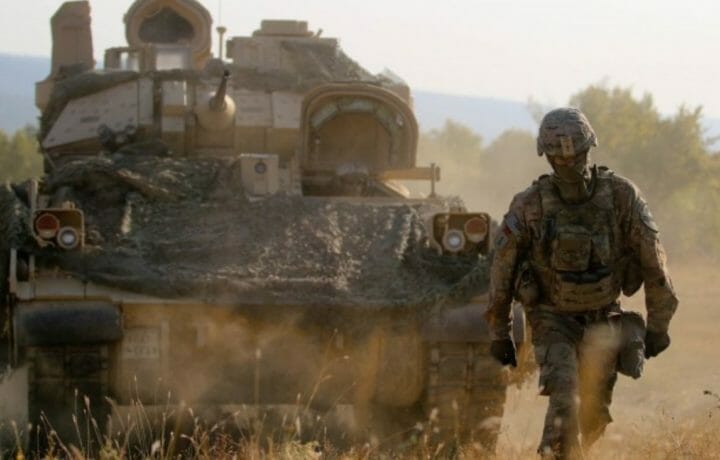The internal combustion engine powers most of the Army’s ground vehicles and needs some type of fossil fuel for it to move troops, equipment, and supplies. In some cases that is gasoline; in most others it is diesel fuel.
In Iraq and Afghanistan, the insurgents knew how important fuel was to U.S. troop movement and sustainment, which is why fuel transports in convoys were prime targets for IED attacks. Between the cost of logistics and security, getting fuel to an FOB ended up costing hundreds of dollars per gallon.
Executive Order
Signed by President Biden on December 8, 2021, it directs in part that the federal government is required to purchase only 100% zero-emission vehicles by 2035. On May 12, the Secretary of the Army committed to electrifying the Army’s non-tactical fleet by 2035. The Army plans to have an all-electric wheeled tactical fleet by 2050. Tracked vehicles like tanks, personnel carriers, and self-propelled howitzers are exempt from the Executive Order, because the electric/battery technology to support these heavy armored vehicles is quite distant in the future. However electrification is quite feasible for the JLTV and similar wheeled fleets.
The Army’s All-Electric Vehicle Plan
The Army started reducing its combustible-powered non-tactical fleet in 2005. As of the end of 2020, they had reduced this fleet by 18,000 vehicles, while adding 3,000 hybrid vehicles. This initiative alone has saved the Army $50 million and 13 million gallons of fuel to date. Between now and the deadline of an all-electric fleet deadline, the Army plans to use hybrid propulsion options as a stopgap until it can develop a total all-electric fleet operational around 2050.
The ISV
In June 2020, GM Defense contractor started building the Army’s new all-electric Infantry Squad Vehicle (ISV). It is built on the Chevrolet Colorado ZR2 chassis and uses 90% of current COT (Commercial Off The Shelf ) parts for its battery and electric propulsion system.
Hybrid Options
Sometime before September 2023, the Army plans to begin testing the new eLRV or Electric Light Reconnaissance Vehicle. In the meantime though, the Army is converting many of its vehicles to hybrid through the addition of Tactical Vehicle Electrification Kits or TVEKs. It will still have the existing fossil fuel powerplant, along with an onboard electric producing unit. They are estimating a fuel consumption drop of at least 25% by being able to use electric power part of the time. Another feature that helps reduced the use of fossil fuel is what many new cars have today – anti-idle where the engine shuts off when stopped.
Right now, combustible engine vehicles that need to power onboard equipment, has to have the engine idling to provide power. With the addition of TVEK, the engine can be shut off part of the time and equipment still has enough battery power to continue operating.
Electric Vehicle Advantages
Tactically there are several advantages to using all-electric vehicles. Besides the obvious one of not needing fuel, a substantial reduction in noise on the battlefield is probably second. Another big advantage is a reduction in heat signature thus making it harder for the enemy to target using thermal devices.
While there are some elements to an all-electric vehicle goal in place, others are still in development or construction. For example the Army is building an infrastructure of at least 470 charging stations in 2022 to recharge its growing non-tactical fleet.
The Army and Department of Defense knows the conversion to an all-electric vehicle fleet will be ongoing, extensive, and expensive, but at least it has a plan and has started executing. As time and technology continues, the process will evolve and mature until the goal is met.




